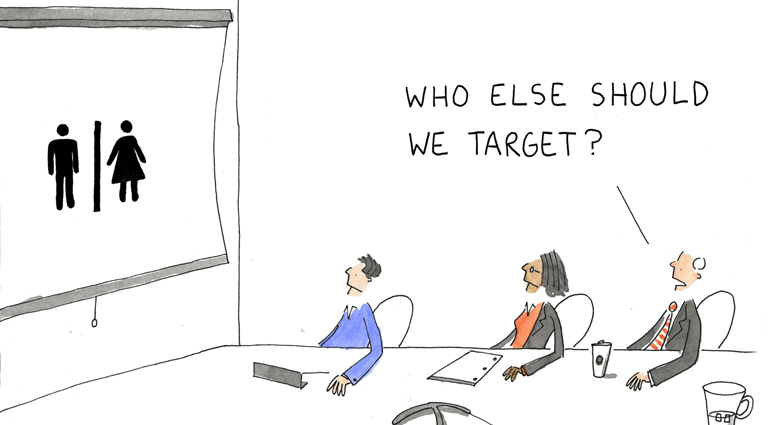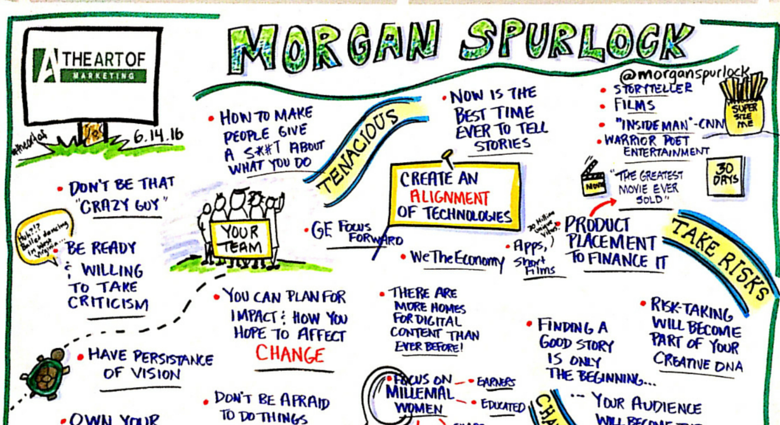Adversperience, the most recently identified genre in the Art of Marketing, is the convergence of Advertising and Experiential Marketing. It is the best way to reach today’s consumers who are increasingly distracted and adept at ignoring most of the information they’re bombarded with daily.
Build momentum by seeding interest and inviting the consumer to connect with the brand.
Both Advertising and Experiential Marketing have been in existence and have played an important role in the purchase process since the dawn of commerce. In early commercial examples, a tradesman (or a butcher or baker for the sake of explanation) sold his wares by placing a sign in a window or on a stand, proposing an item for sale. That sign alerted buyers, followed by an exchange between buyers and the seller. The sign was one of the first forms of advertising. Often, prior to sale, the seller would allow buyers to test the wares before proceeding to the selling stage. As new products or variations on products were developed, the seller would introduce them to buyers to try before they buy. This testing stage was most certainly experiential.
Though these examples simplify the discussion, the point remains: neither advertising nor experiential marketing are new. What is new is taking a stand: identifying that creating a brand experience through the convergence of these strategies (an “adversperience”) is necessary in order to reach consumers during these days of distraction and disruption.
Adversperiential Marketing is live brand advertising. It is what advertising needs to be in order to reach today’s consumers. It is advertising on steroids. Most importantly, it is “above the line” and strategic, not a below the line tactic.
Why is making this point so important? Here’s why:
I have been marketing brands my entire career and it is becoming more challenging because proliferation and chaos is truly the order of the day. How consumers decide what to try and what to buy depends on the significance of the item or category in their own very personal experiences. As a result, what influences these decisions is equally varied. It can range from “traditional” advertising to word of mouth conversations. It can be online or offline, or both. Again, none of this is new; advertising and experiential marketing have seen their ebbs and flows over the years. But, we’re seeing a resurgence, and now a convergence, because brands need to rise through prolific clutter in order to get noticed. The very best way to do that is with an Adversperience: a live, multisensory experience that allows the consumer to get up close and personal with the brand, in a way that is relevant and resonates with the target consumer.
The first stage is to build momentum by seeding interest and inviting the consumer to connect with the brand. The second stage is to engage the consumer in a live, two-way, multisensory experience that is both strategic for the brand and memorable for the consumer, which includes the sharing of key “contact” information by both parties. The third stage is to ensure that the conversation is relevantly (and ideally reciprocally) maintained until the next brand interaction. I call this process the Adversperiential continuum. It is very much alive and well, driving share, volume and ROI for brands that are actively embracing it.
As I espouse the virtues of Adversperiential Marketing, short-term thinkers question reach. For example, a TV or digital ad can reach thousands - even millions - of people in an instant. This is true, but is it actually seen or heard? Just as importantly, does it resonate?
Consumers are bombarded with information and rely on their most credible sources.
Long-term thinkers will see the short- and long-term benefit of an Adversperiential campaign. Short-term, an Adversperience is highly targeted and interactive. There are opportunities for the consumer-brand interaction to be very personal, thereby addressing the consumer’s very personal needs. If done right, these up close and interactive experiences have a long-term effect: an ongoing connection and sharing by the consumer among their circles of influence. These conversations within familiar social circles get heard amidst the clutter of proliferation, disruption and distraction.
In the ‘80s, there was a shampoo commercial that included the line: “tell your friends about it, and they’ll tell their friends about it, and so on and so on.” That truth about human sharing is even more significant today as consumers are bombarded with information and rely on their most credible sources - those in familial and social circles – to help make brand decisions. Adversperiential Marketing inserts a brand into the consumer’s personal story, which is a story that people increasingly want to share and have more and more channels available with which to do so. It is a way to convert people from consumers to brand advocates who will influence people in their circles. This is increasingly important in order to cut through the clutter. As brands recognize the strategic importance and embrace Adversperiential Marketing, they’ll see there is a very trackable and measurable ROI, with benefits to their brand health, loyalty and volume scores.
To learn more or to add to the conversation about Adversperiential Marketing (as I prefer to say: to “join the revolution”), visit adversperience.com and share your thoughts. You can also purchase a copy of my recently published book, Adversperience, which includes more information on Adversperiential Marketing and case studies to demonstrate its benefits.
image courtesy of beautyfrosting.com





.png)



What Did You Think?